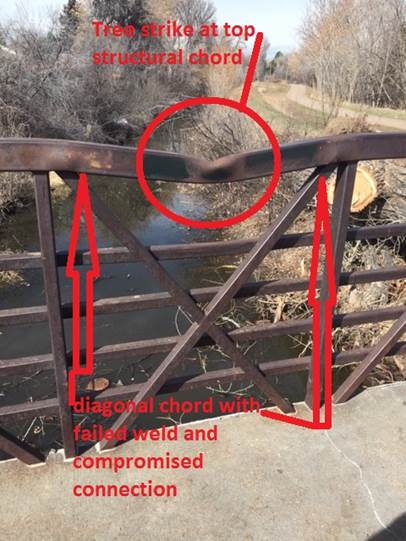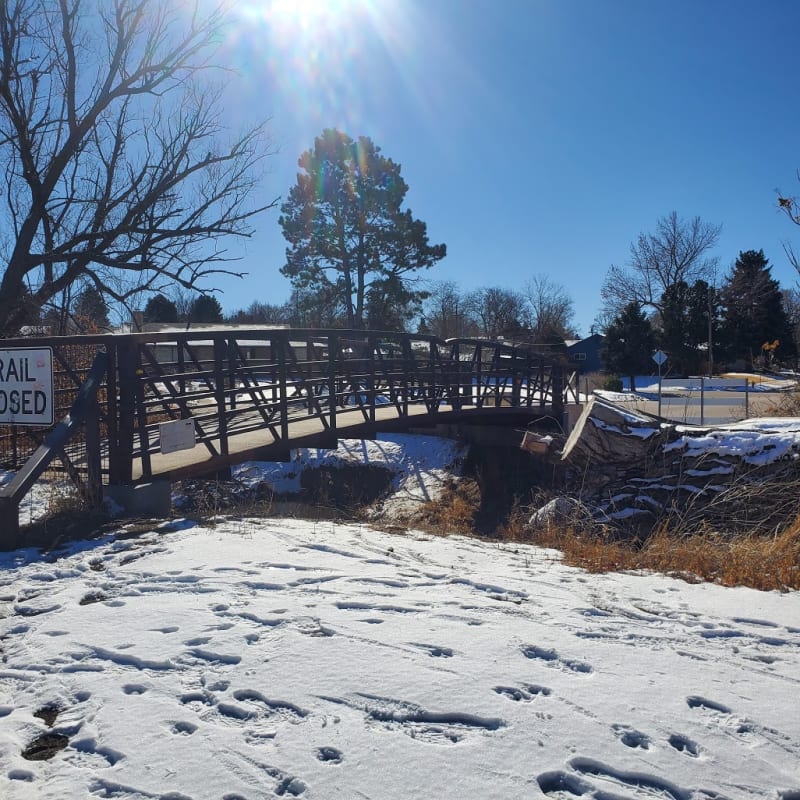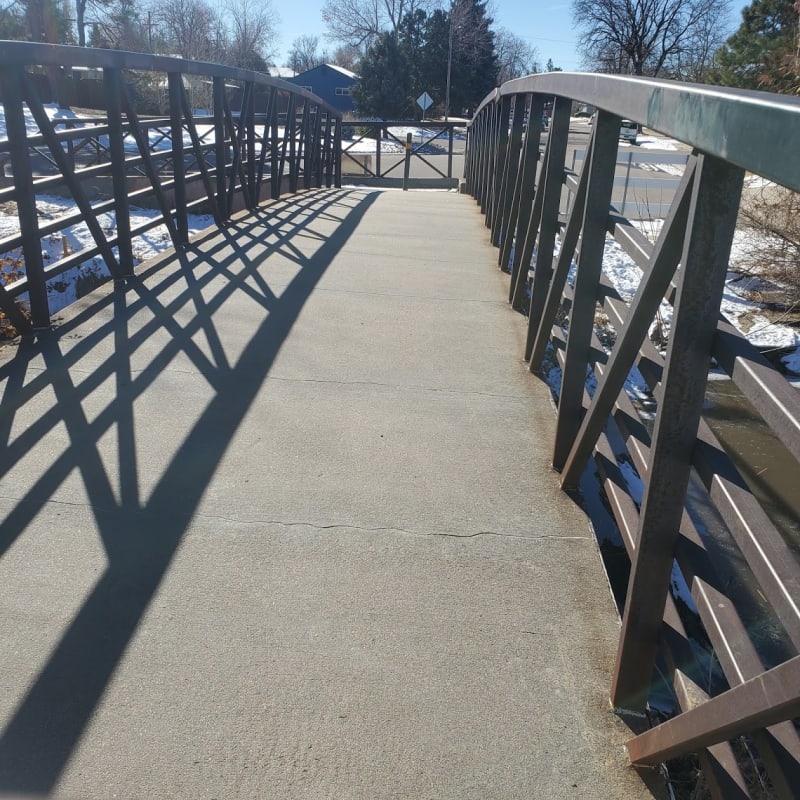rhodesrt
Mechanical
- Feb 24, 2021
- 2
Hi All, I am new to the forum and hoping to get some expert advice. I am a mech eng with no experience with bridge design since college. A tree fell on a pedestrian bridge in my neighborhood and the city closed the bridge. We reached out to our city council member and were told it is going to be replaced. I did a little research and it looks to me like this is something that could be repaired. I hate to see my tax dollars wasted if they don't have to be.
Can anyone take a look at the attached pictures and let me know if it looks like, on the face of it, like a total replacement of this pedestrian bridge is needed? I know this is very limited info so let me know if I can take some measurements or additional pictures to help in the assessment.
I also reached out to the city to see if they have a report, and this was the response:
"I am the Director of Infrastructure Project Management in Public Works. We inspect and maintain almost all of the bridges with in Denver. We inspected the bridge last spring and determined the damage is extensive enough to close it for safety reasons. At first glance, the damage can appear minimal. Our major concern is the bridge is a functioning truss type structure that gets it load carrying capability from the members that appear to be handrails. When the tree struck the bridge back in March, a sizable branch landed on the west top chord member, directly in the center. The tree bent the top member and failed the welds to the two supporting diagonal members. This damage drastically lowers the amount of live load (or people) that can stand on the bridge. It is also very difficult to repair this type damage."



Can anyone take a look at the attached pictures and let me know if it looks like, on the face of it, like a total replacement of this pedestrian bridge is needed? I know this is very limited info so let me know if I can take some measurements or additional pictures to help in the assessment.
I also reached out to the city to see if they have a report, and this was the response:
"I am the Director of Infrastructure Project Management in Public Works. We inspect and maintain almost all of the bridges with in Denver. We inspected the bridge last spring and determined the damage is extensive enough to close it for safety reasons. At first glance, the damage can appear minimal. Our major concern is the bridge is a functioning truss type structure that gets it load carrying capability from the members that appear to be handrails. When the tree struck the bridge back in March, a sizable branch landed on the west top chord member, directly in the center. The tree bent the top member and failed the welds to the two supporting diagonal members. This damage drastically lowers the amount of live load (or people) that can stand on the bridge. It is also very difficult to repair this type damage."




![[lol] [lol] [lol]](/data/assets/smilies/lol.gif) However, I would go with replacing the damaged section.
However, I would go with replacing the damaged section.![[sad] [sad] [sad]](/data/assets/smilies/sad.gif)